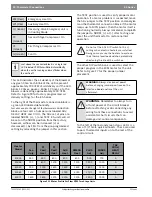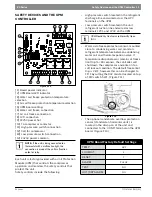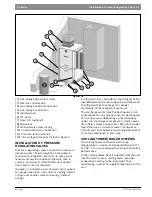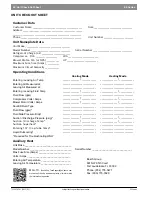
Installation of Pressure Regulating Valves
|
19
ES Series
T111970291 (2015/01)
ES Series
Figure # 18
[1] Line voltage disconnect (unit)
[2] Flex duct Connection
[3] Low voltage control connection
[4] Line voltage connection
[5] Vibration pad
[6] P/T ports
[7] Hose kits (optional)
[8] Ball valves
[9] Solenoid valve slow closing
[10] Condensate drain connection
[11] Pressure tank (optional)
[12] Line voltage disconnect (electric heater)
INSTALLATION OF PRESSURE
REGULATING VALVES
Pressure regulating valves are used to increase or
decrease water flow through the heat pump in
response to refrigerant pressure. In some cases
more water may be required in heating than in
cooling, or vice versa. With the ES heat pumps
these valves are not required.
However, if installed, a pair of valves are required
for proper operation, one valve for cooling (direct
acting) and another valve for heating (indirect
acting).
A refrigerant tap is provided in the refrigerant line
located between the reversing valve and the water-
to-refrigerant heat exchanger for proper
monitoring of the refrigerant pressures.
The discharge water from the heat pump is not
contaminated in any manner and can be disposed
of in various ways depending on local building
codes (i.e. discharge well, dry well, storm sewer,
drain field, stream or pond, etc.) Most local codes
forbid the use of a sanitary sewer for disposal.
Consult your local building and zoning department
to insure compliance in your area.
COOLING TOWER/BOILER SYSTEMS
The cooling tower and boiler water loop
temperature is usually maintained between 50° F
to 100 ° F to assure adequate cooling and heating
performance.
In the cooling mode, heat is rejected from the unit
into the water loop. A cooling tower provides
evaporative cooling to the loop water thus
maintaining a constant supply temperature to the
unit.
1
2
3
4
5
6
7
8
9
10
11
12
















































